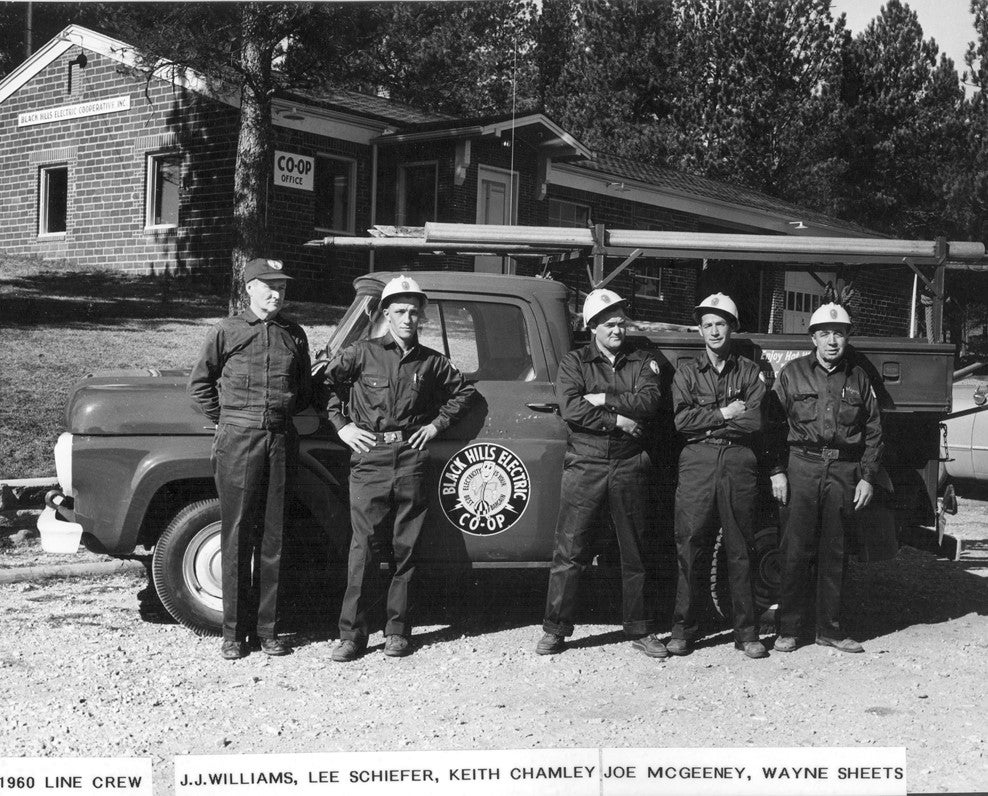Toll Free: (800)-742-0085
A Part of South Dakota History for More Than 75 Years
Born in 1940 and reborn in 1945, Black Hills Electric Cooperative has grown into one of South Dakota's larger cooperatives. It all began with a rancher living between Hill City and Keystone. Fred Root had requested electrical service from the investor-owned power company in the area. Discouraged by the prohibitive cost of transformers and other charges required to provide electricity to him and his neighbors, Root turned up the kerosene lamp and set about learning of the REA program. After much investigation, he decided to interest his neighbors and called a public meeting. Despite a temperature of 31 degrees below zero, the January 17, 1940, meeting attracted 49 hardy people from a wide area. That night, just four years after President Franklin Roosevelt had signed the Rural Electrification Act, BHEC was organized at Hill City.
Early in 1941, the Custer Chamber of Commerce made an offer to furnish the cooperative with an office and carry the rent, light and telephone bills until such time as the cooperative could reimburse the chamber. BHEC's newly elected board soon procured a federal loan of $72,000 to begin construction of a power distribution system. Soon after, an additional $108,000 was secured. By late 1941, World War II was making it difficult for the cooperative to buy copper and other needed materials. As the war demands increased, the decision was made to close the office and rural people remained in the dark during the war.
On May 3, 1945, the cooperative was reactivated and again, the office was opened in Custer. Steel strikes and other shortages caused delay after delay that slowed construction. Four hundred homes were awaiting wiring, and as materials became available, work progressed. Finally, the contractor notified the cooperative that the line from a point near Custer to, and including, Pringle, was ready to be energized. REA gave final approval and the date for closing the breakers was set for July 20, 1946, at the Pringle substation.
With a hot stick and rubber gloves borrowed from another cooperative, George Frink, vice-president of the board, closed the switches and started the borrowed transformer humming. Six years, six months and three days after BHEC was organized, the first light was turned on. Thirty additional homes were connected that day and at last, the rural people of the Black Hills and southwestern South Dakota would be out of the dark.
Since that day in 1946, BHEC has provided rural areas of the Black Hills and southwestern South Dakota with more than a steady flow of electricity. BHEC has provided professional, courteous, high quality service to its membership since its inception. Today, BHEC serves more than 8,000 members over 2,665 miles of line. Approximately 3,700 square miles in parts of Custer, Fall River, Pennington, Meade, Lawrence and Oglala Lakota counties are now embraced in BHEC's service territory. Welcome to Black Hills Electric, we are proud to have you included in our membership!

